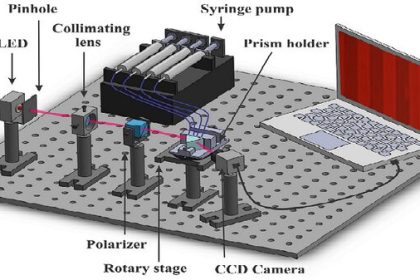Researchers at MIT have introduced a new method for revealing the structures of crystalline materials such as metals, rocks and ceramics. Previously, scientists used X-ray crystallography to determine the structure of crystalline materials.
Chemists at MIT have now introduced a new artificial intelligence-generating model that can make it much easier to determine the structure of these powdered crystals. The predictive model can help researchers characterize materials for use in batteries, magnets, and many other applications.
The structure of the crystalline material is the key to understanding its superconducting capacity. Dana Friedman, Frederick George Keyes Professor of Chemistry at MIT, stated that structure is the first thing you need to know about any substance. It’s important for superconductivity, it’s important for magnets, it’s important for knowing what photovoltaics you’ve created. Crystalline materials, which include metals and most other inorganic solids, consist of lattices containing many identical repeating units. These units can be thought of as “boxes” of distinct shapes and sizes, with atoms neatly arranged inside them, according to researchers at MIT. The new MIT model breaks down the process of predicting structures into several subtasks.
The researchers believed that it first determined the size and shape of the lattice box and which atoms fit into it. It then predicts the arrangement of atoms inside the box. For each diffraction pattern, the model generates several possible structures that can be tested by feeding the structures to a model that determines the diffraction patterns for a given structure. “Our model is generative AI, meaning it produces something it hasn’t seen before, and that allows us to generate many different guesses,” MIT graduate student Eric Riesel said in a press release. We can then predict what the powder pattern should look like for our guesses. And then if the input is exactly the same as the output, we know we guessed right.” The MIT researchers also tested the model on more than 100 experimental diffraction patterns from the RRUFF database, which contains powder X-ray diffraction data for approximately 14,000 naturally occurring crystalline minerals, which they excluded from the training data.
In this data, the model was about 67% accurate. Next, they began testing the model on previously unsolved diffraction patterns. This method can be used to produce new materials with different crystal structures. The researchers also used their model to discover structures for three materials that Friedman’s lab created by forcing unreactive elements at atmospheric pressure to form compounds under high pressure. This approach can be used to produce new materials with completely different crystal structures and physical properties, even if their chemical composition is the same, according to research at MIT.
To see the latest news, refer to the scientific news page of Tekna Media.
RCO NEWS















